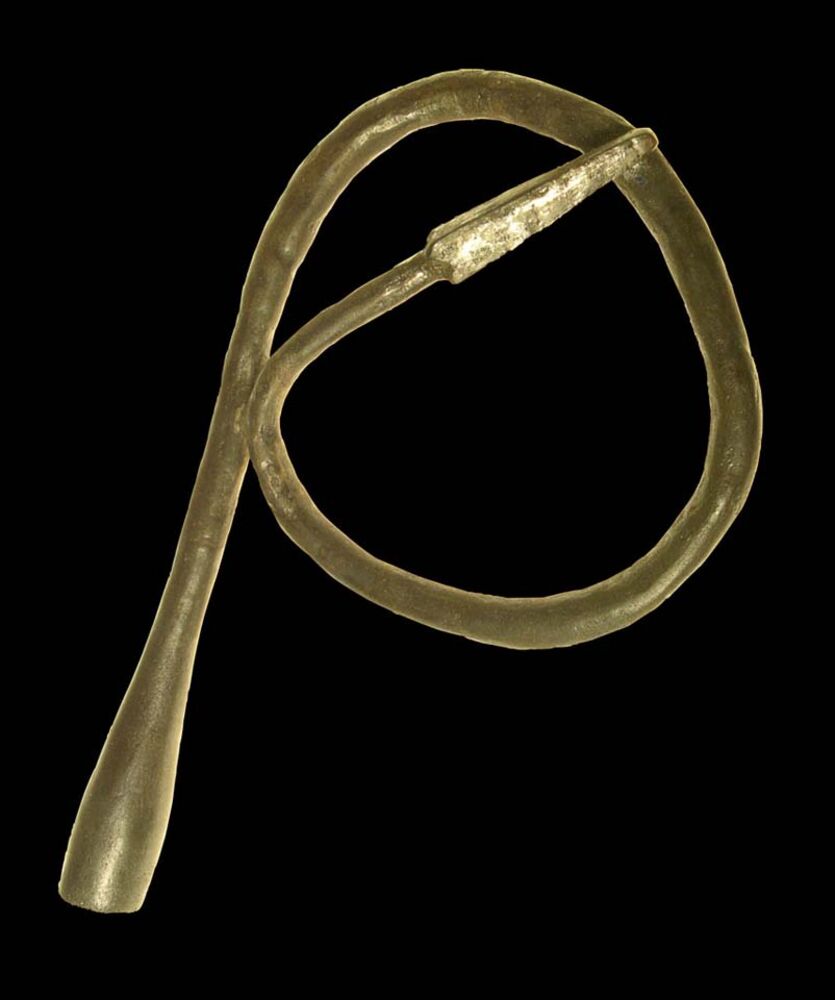43 Roman Weapons in Germania
From Germanic graves come the remains of Roman throwing spears and chain mail, which are to be regarded as loot. The typical throwing spear of Roman legionaries, the so-called pilum, was an armour-piercing weapon to penetrate the chain mail of opponents. The deliberately bent pilum from Langenbek was found in an urn. Parts of chain mail that have been beaten into small pieces are often found in women's graves; they were worn by Germanic women on their necklaces like a souvenir.
Info: Showcase 43

Pilum
Age: 10 - 30 n. Chr. Roman Imperial Period
Roman Imperial Period: With the beginning of iron smelting around 700 BC, the new, harder iron took the place of bronze. The Iron Age is the third major period in human history after the Stone Age and the Bronze Age. In northern Europe it is divided into the Pre-Roman Iron Age, which covers the period from the end of the Bronze Age to the expansion of the Roman Empire at the turn of the century. And the Roman Imperial Period, in which the completely new way of life introduced by the Romans, can also be clearly seen in Free Germania. With the introduction of writing, European prehistory ends - early history begins.
Material: Iron
Location: HH-Langenbeck
Pilum Tip
Age: 10 - 30 n. Chr. Roman Imperial Period
Roman Imperial Period: With the beginning of iron smelting around 700 BC, the new, harder iron took the place of bronze. The Iron Age is the third major period in human history after the Stone Age and the Bronze Age. In northern Europe it is divided into the Pre-Roman Iron Age, which covers the period from the end of the Bronze Age to the expansion of the Roman Empire at the turn of the century. And the Roman Imperial Period, in which the completely new way of life introduced by the Romans, can also be clearly seen in Free Germania. With the introduction of writing, European prehistory ends - early history begins.
Material: Iron
Location: Ehestorf-Vahrendorf
Chainmail Fragments
Age: um 400 n. Chr. Migration period
Migration period: Today, the transitional period from Antiquity to the Middle Ages is usually defined as the time of the migrations of the peoples from the 4th to the 6th century and the associated confrontation of the Germanic peoples with the culture of Antiquity and Christianity. However, the penetration of Germanic tribes into the Roman Empire did not mean the complete demise of ancient culture and its social and economic structures, as older research claims. Where the Roman Empire had had a formative influence for centuries, the old structures, institutions and traditions remained partially intact.
Material: Iron
Location: Westerwanna


